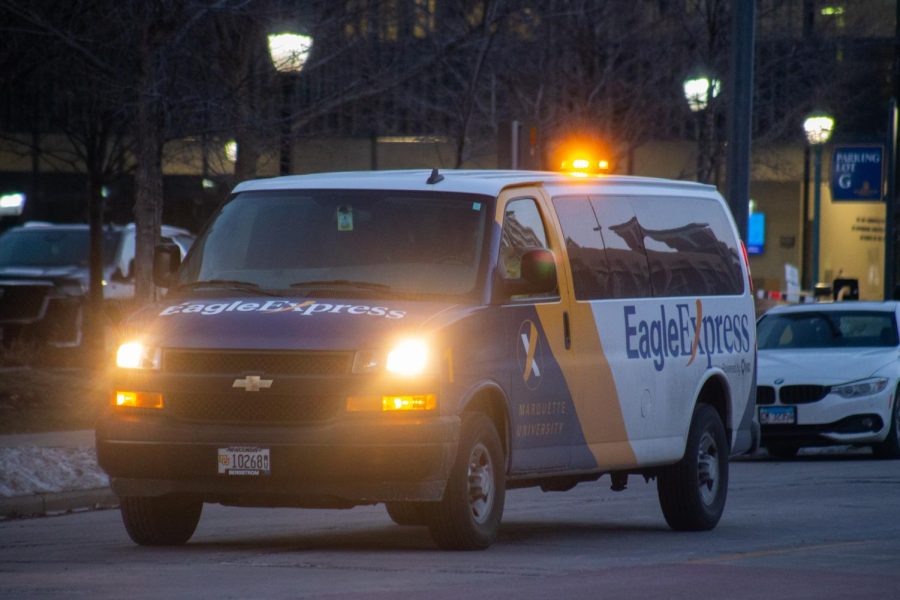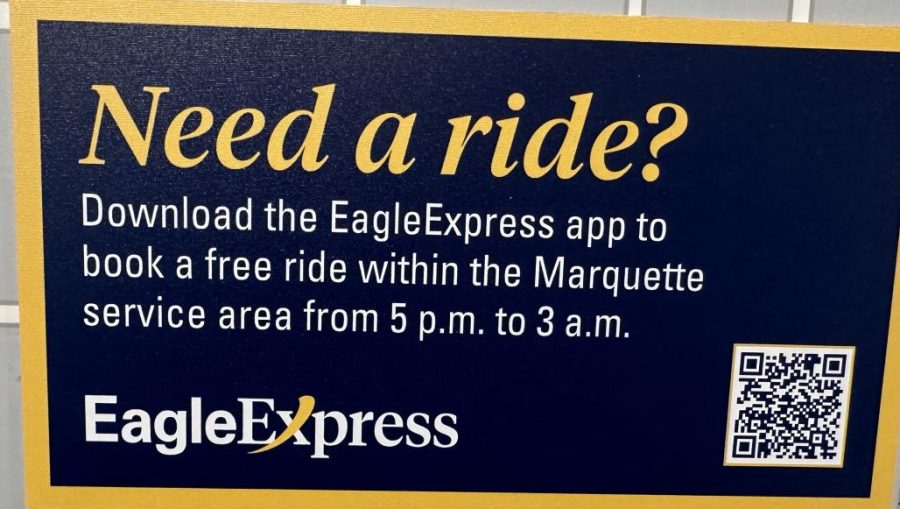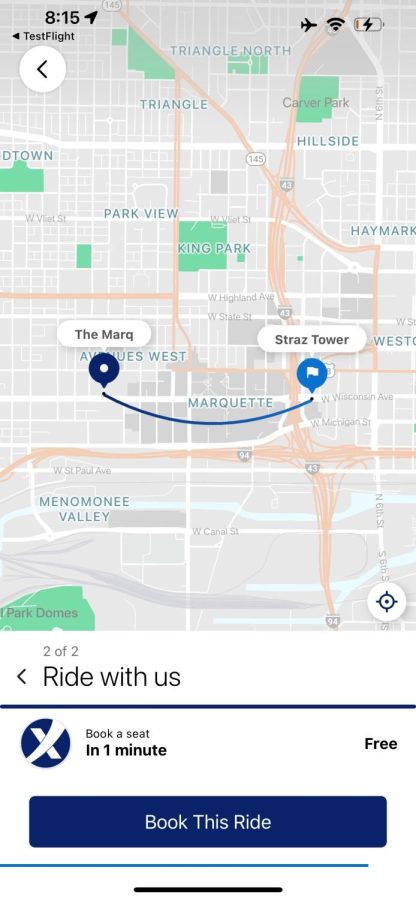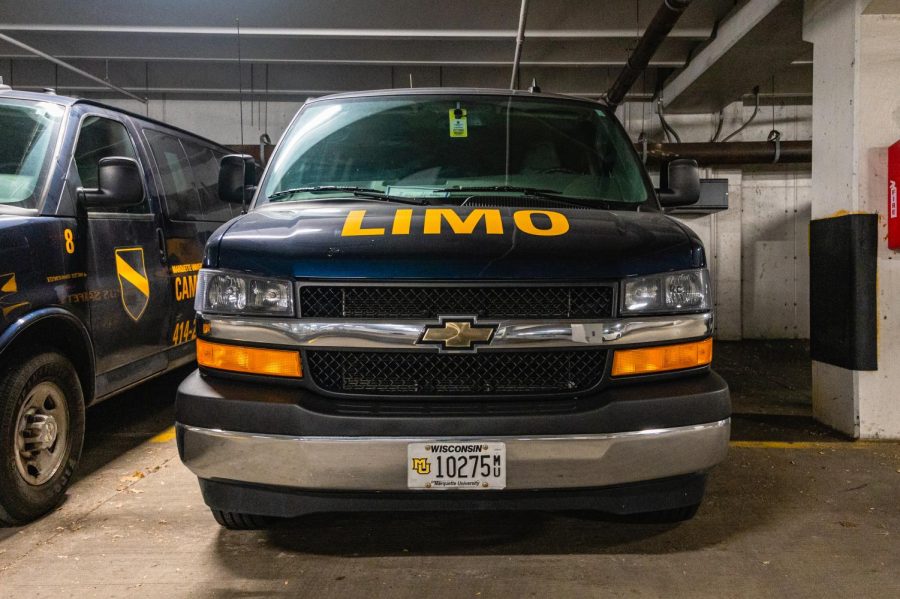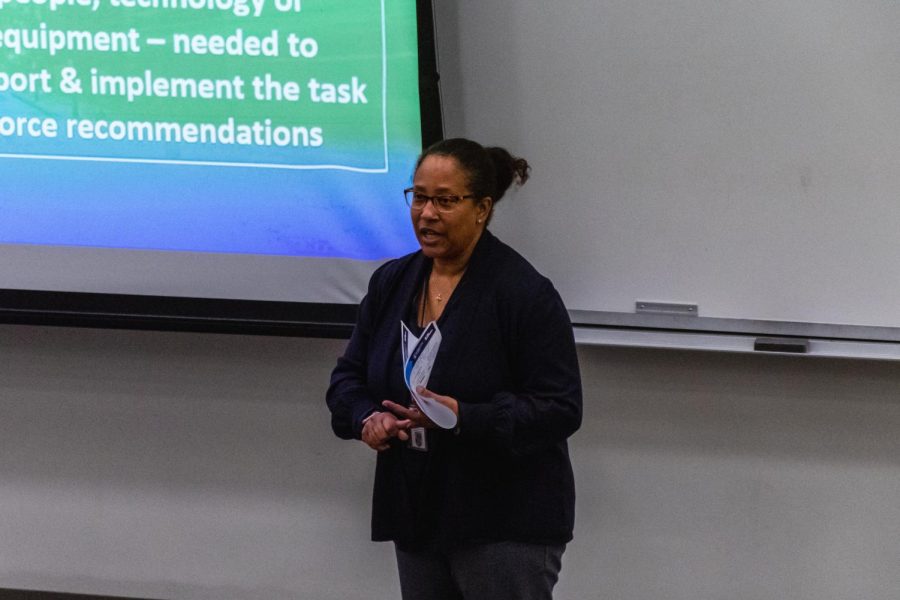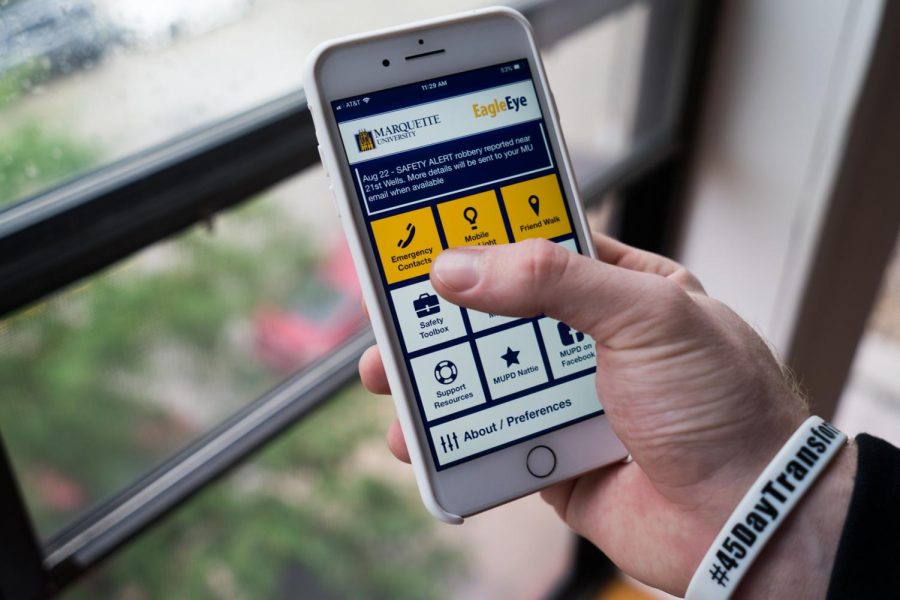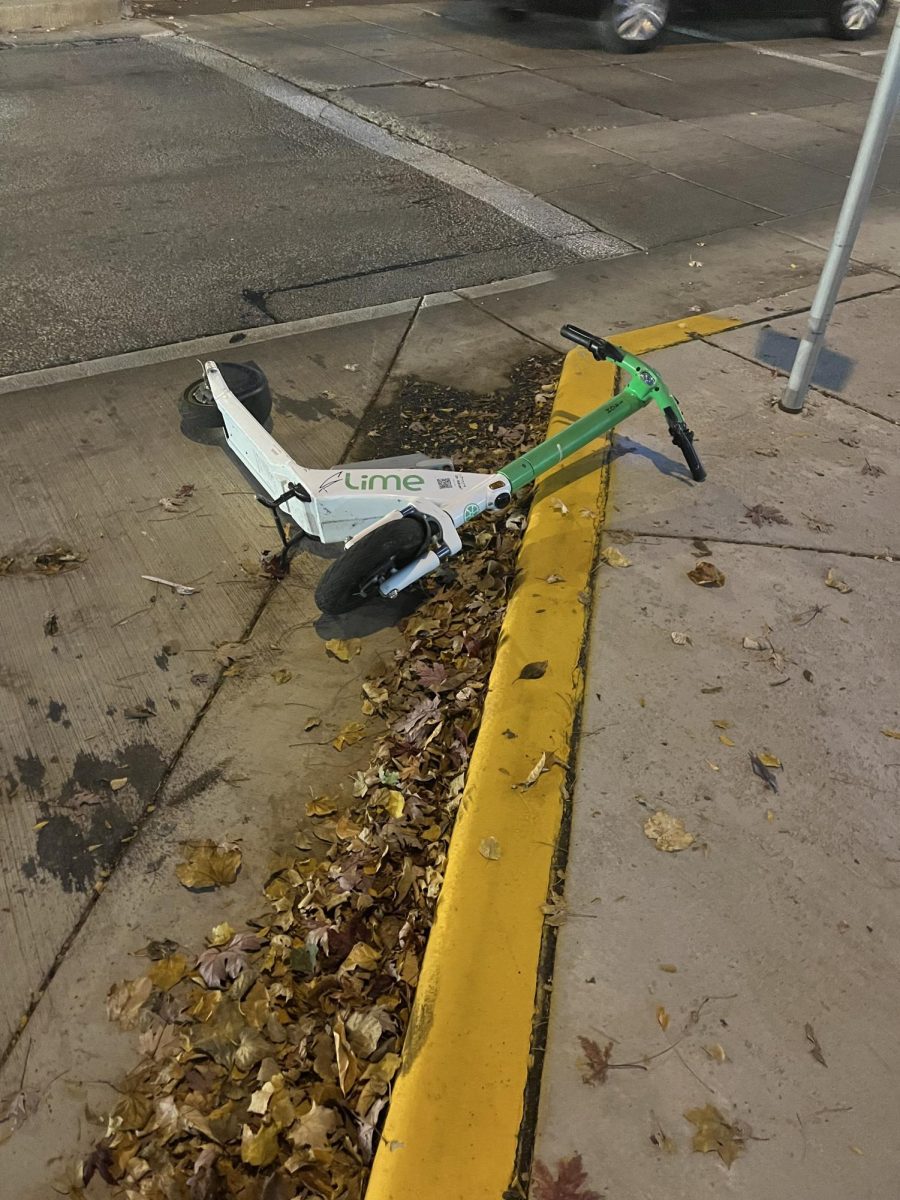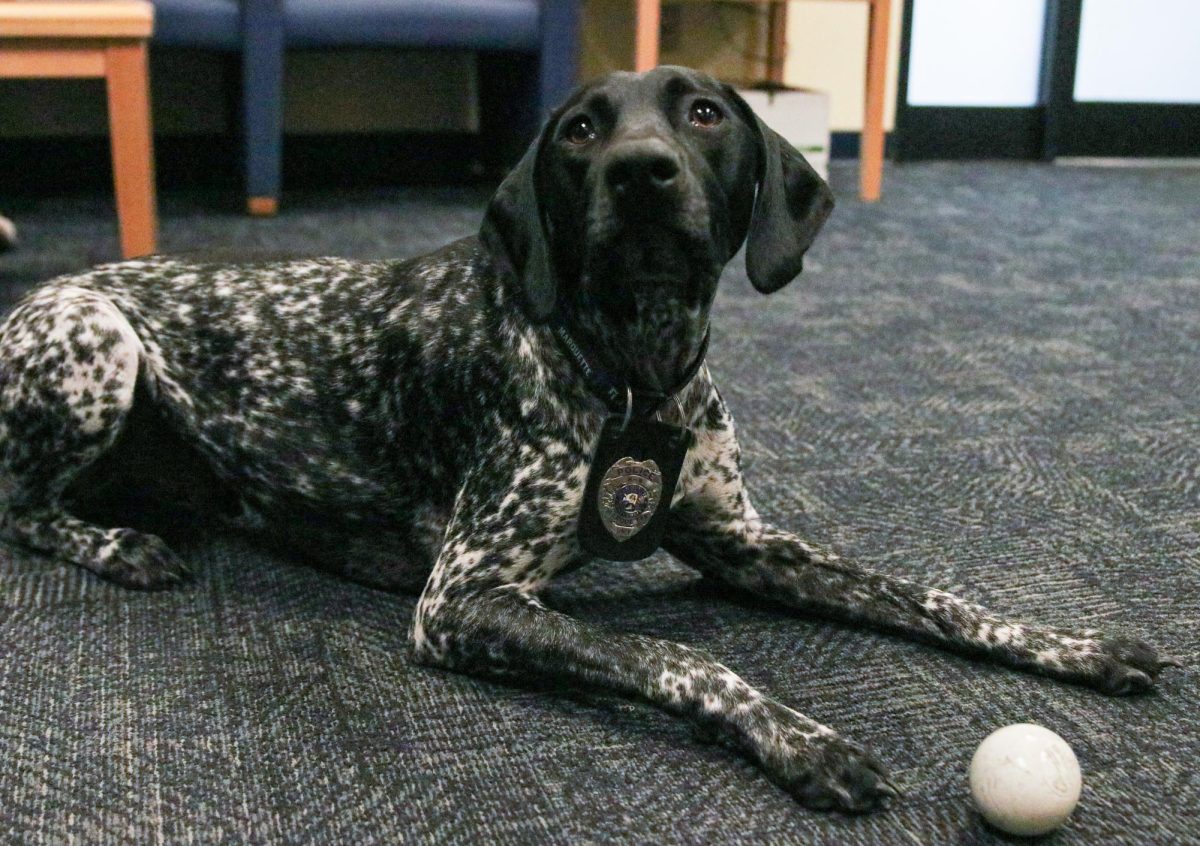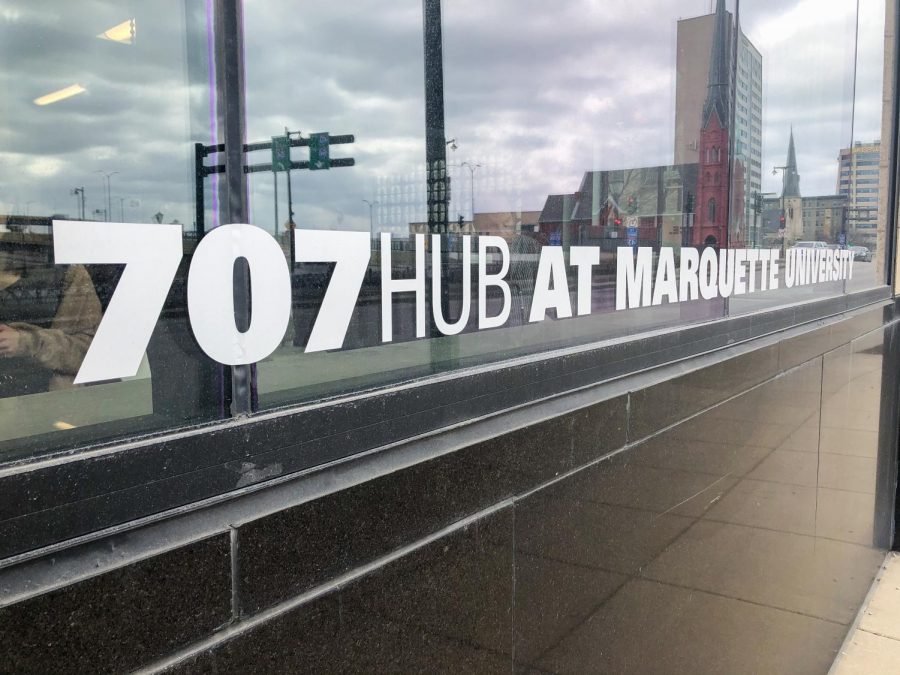At the beginning of this spring semester, the Marquette community was met with change. From the official opening of O’Brien Hall to the temporary closure of the Rec Center, campus continues to evolve with each change of the seasons. However, there is one change that has been affecting Marquette students in need of reliable transportation: the EagleExpress.
The service was created as a part of efforts to make transportation safer on campus, replacing the almost four-decades-old LIMO Service. The new service, which has an integrated app, works similarly to Uber or Lyft.
Both services’ routes include several spots on campus and two off-campus destinations: Milwaukee Intermodal Station and Eleven 25 at Pabst Apartments. The EagleExpress is also active at the same hours as the LIMO service was, from 5 pm to 3 am every day of the week. However, there are differences between the systems that Marquette community members are learning to navigate.
While the LIMO service allowed students to flag down vehicles even when they themselves hadn’t called them, EagleExpress vans require a booking through its official app in order to accept a passenger.
Currently, there is a petition on change.org to turn the EagleExpress service back into the LIMO Express that was started by an Instagram account @concernedmarquettestudent.
“I don’t understand why the EagleExpress can’t just pick up people anymore. What if someone really needs to use the service? What if someone is in danger? It seems really nonsensical to me,” Paola Velazquez, a sophomore in the College of Arts & Sciences, said.
The EagleExpress vans are not able to pick up students without a prior reservation due to its interface.
“Boarding a van that you have not requested interrupts someone else’s ride,” Amy Oltendorf, a Marquette University Police Department sergeant and EagleExpress supervisor, said in an email.
EagleExpress vans are designed to be dispatched with available seating in mind in order to optimize fleet availability with ride request volumes.
Summer Luna, a sophomore in the College of Arts & Sciences, said this interface is the cause of several issues within the transportation system.
“The tracker and time don’t always update accurately, so I can’t even tell when my ride was coming or not. A couple of times when the ride did appear, it drove right past me even though it was mine based on the number,” Luna said.
Apart from giving riders an estimated pickup time and location with a pin tracker in order to ensure passengers are as close to the pickup spot as possible, the EagleExpress application sends riders a message five minutes before arriving and once it has reached their pickup spot.
Additionally, Eagle Express vans are supposed to wait two minutes before being able to cancel a passenger’s ride. Although the LIMO service did not always provide approximate times for pickups, some students have stated that they are positive that the new system has led to an increase in wait times.
“I think the Eagle Express is new and innovative, like Marquette’s version of Uber. The only downside is that arrival times have become a lot longer than before,” Mimi Sinotte, a first-year in the College of Communications, said.
Oltendorf assured that changes had already been made to the platform based on the feedback, lowering average wait times from 9.7 minutes to 5.4.
“Based on early feedback from riders and drivers, as well as a thorough set of analytics from the application we now have access to, the university was aware of early issues impacting the EagleExpress rider experience,” Amy Oltendorf, MUPD sergeant and EagleExpress supervisor, said in an email.
For some, however, these alleged wait time increases have discarded the EagleExpress as a transportation option on campus.
“I don’t take the EagleExpress because the wait times are always long. Most of the time it takes less time for me to walk to my destination than to book a ride and wait,” Velazquez said.
However, not all students are able to walk to their destinations on campus. While Sinotte was using crutches at the beginning of the semester, she felt as though the EagleExpress was not a suitable option for her.
“When I rode the EagleExpress it was hard because it is obviously not the most spacious, but I only really used it once during the time period I was injured because it was just not the most accessible,” Sinotte said.
The Eagle Express does claim to provide transportation for disabled people on campus, but those benefits are only afforded to those who are in wheelchairs. The application includes a rider type option, which lets passengers specify if they need a wheelchair accessible van and whether they are a student, faculty or staff member.
However, as more students interact with the EagleExpress platform, Oltendorf said it becomes easier for campus safety to correct the issues associated with the program.
“I appreciate everyone’s patience while adjustments were made. I am also grateful for my student staff who are passionate about making EagleExpress the best it can be,” Oltendorf said in an email.
This story was written by Clara Lebron. She can be reached at clara.lebron@marquette.edu


